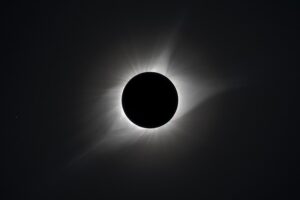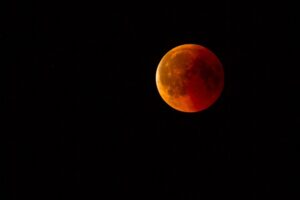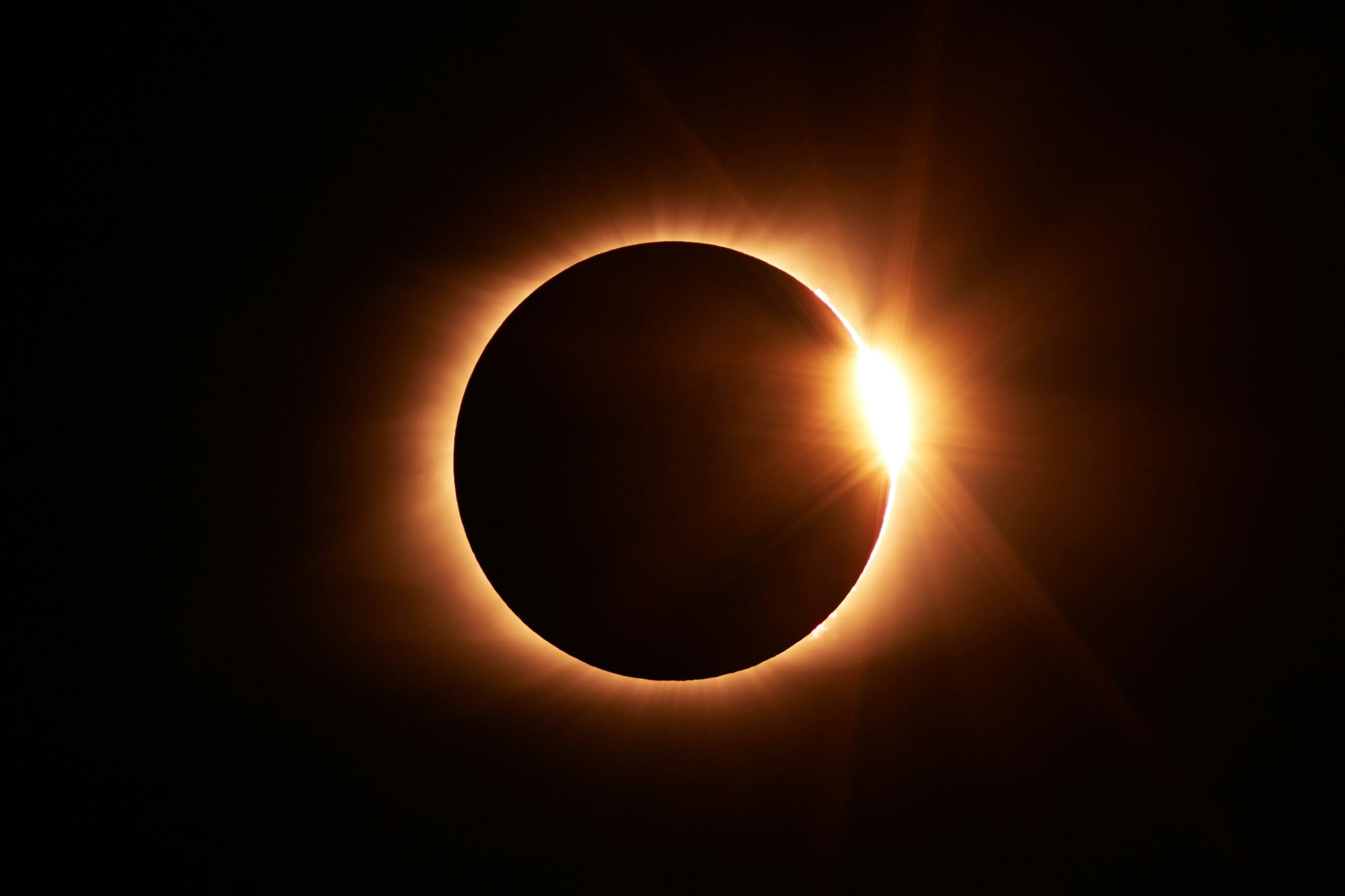An eclipse is used to refer to an astronomical event in which a celestial object such as planets, stars, galaxies, and/or spacecrafts are temporarily obscured. This obscuration can occur through the object passing through the shadow of another, or having another object come between it and the viewer.
So, what exactly is solar eclipse?
A solar eclipse is when the Moon passes between the Sun and the Earth, which then obscures the view of the sun from a small part of Earth, whether it be partially or totally. There are four different types of solar eclipses:
- Partial solar eclipse: As the name suggests, this occurs when thee moon partially blocks the sun. Consequently, some parts of the sun are still visible and the blocked part of it appears dark. This is the most common!
- Annular solar eclipse: The moon blocks the sun in a way that the perimeter of the sun still remains visible. The glowing ring, or “annulus” around the sun is known as the “ring of fire,” and is the second most common type of eclipse.
- Total solar eclipse: As the name would suggest, the moon completely blocks out the sun for a few minutes. This, of course, leads to a period of darkness. During this darkness, you can witness the solar corona, which is often impossible to notice with the naked eye when the sun is unobscured. It also may be possible to see Baily’s beads, a diamond ring effect that occurs when some sunlight is still able to reach Earth as the moon is not perfectly round (due to craters and valleys.)

- Hybrid solar eclipse: This is the rarest of all the eclipses! It’s a mix of a total and annular eclipse. In some regions of the Earth, people will witness a total eclipse, whereas in other regions, people will observe an annular eclipse.
Fun Fact: There’s a solar eclipse occurring on Monday, April 8th, 2024! If you live in Calgary, we’ll be experiencing a partial eclipse as we aren’t located in the region of the eclipse’s totality. However, if you live elsewhere, check out this website to see where the total eclipse is expected to occur!
https://science.nasa.gov/eclipses/future-eclipses/eclipse-2024/what-to-expect/
Do other planets experience eclipses?
Yes! The moon experiences eclipses called “lunar eclipses.” It happens when the Sun casts Earth’s shadow onto the moon’s surface. This means that the Earth must be between the Sun and the Moon, with the two planets and star aligning on the same plane of orbit. On occasion, the moon’s surface appears red as the only sunlight reaching it passes through the Earth’s atmosphere.
*Lunar eclipses can only occur during a full moon.

Other planets experience solar eclipses but they’d require a moon that’s large enough to cover the sun’s surface, at least from their perspective. For planets like Mercury and Venus, they don’t experience solar eclipses as they do not have moons! For Mars, since it has two moons, it does experience PARTIAL solar eclipses only due to its moons not being large enough. The gaseous planets, Jupiter, Saturn, Uranus, and Neptune, can experience total eclipses as they have large moons and, from their perspective, the sun appears small. However, since these planets are made of gas, you can’t exactly witness the eclipse.
Sources: 1 / 2 / 3 / 4 / 5 / 6
✧・゚: *✧・゚:* *:・゚✧*:・゚✧ ✧・゚: *✧・゚ :* *:・゚✧ *:・゚✧✧ ・゚: *✧・゚ :* *:・゚✧*: ・゚✧✧・゚: *✧・゚:* *:・゚
Want to support us? Check out our other blogs:

